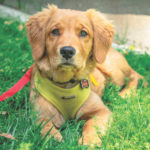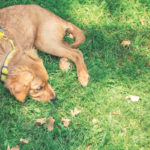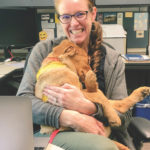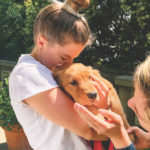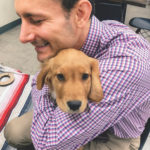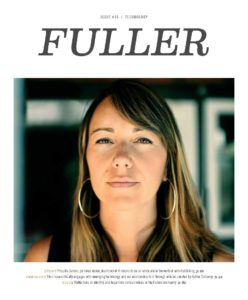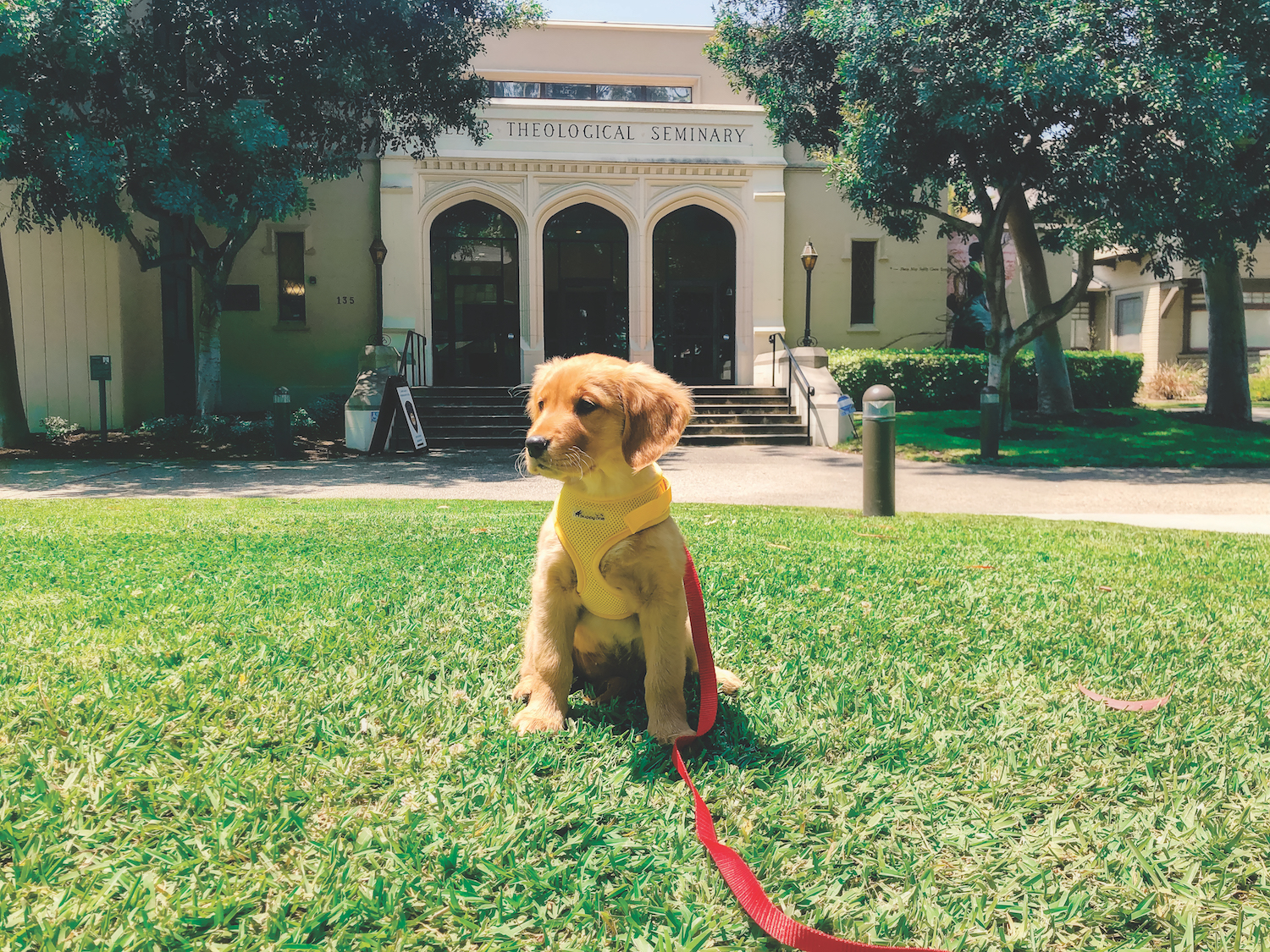
The Arol Burns Mall at Fuller’s Pasadena campus has long been a favorite dog-walking spot, thanks to its plentiful shade and, perhaps, abundance of squirrels to chase. But since last April, one dog has inexplicably captured the hearts of students, faculty, and staff. “Since she was 10 weeks old, I’ve made a point of exposing her to people of all ages and ethnicities,” says Bernadette “BJ” Barber, Fuller’s executive director of Human Resources and Organizational Development, of her golden retriever puppy, Oona. “I want her to be comfortable and confident; in the future I want her to be a therapy dog.”
But Oona has already become a de facto therapy dog. BJ often brings the pup to Barker Commons to sniff around and practice tricks on the grass. Students drift toward them, and employees look down from their office windows and then come out to greet Oona, who offers them the gift of tenderness. Regularly, BJ says, people will hold Oona in their arms and start crying. “They’ll say, ‘I don’t know what this is about; I can’t not cry when I see her,’” she shares. “Dogs have this special gift of allowing us to be ourselves, to come out of the anxiety of the stressors we’re trying to manage or the perfections we’re trying to achieve or the people we’re trying to impress . . . she allows an openness and release, a break for a moment to just be.”
Recently a colleague, who had been grieving multiple deaths among her family and friends, called BJ and asked, “Is Oona here today? I’d like to see her.” The colleague had just learned of yet another loved one’s death. BJ went home at lunch to bring Oona back to campus, leaving the dog with her hurting friend for the afternoon. “Having Oona in her office allowed her to keep working, but also probably to lay on the floor with Oona and cry and do what she needed to do,” says BJ.
“There’s an impact dogs like Oona have on individuals,” she reflects, “but there’s also an impact on the relationships between the humans who are interacting with the dog.” Oona becomes an access point, so strangers—whether visitors walking through campus, or Fuller students and employees—who would usually just walk by BJ stop and talk to her instead. “There’s everything from the tentative inquiry about Oona to the people rushing over and just hugging her. But there’s definitely that movement to another level of conversation.”
Besides the dogs that frequent campus, BJ points out, “There are kids who grow up here, whose parents are students or employees or alumni; they play on the mall. Fuller has been a playground for many.” Having dogs and children come through campus, she thinks, helps reinforce the wholeness of our lives that we bring to our work at Fuller. “We’re here to live life together, and the dogs help us not just be cerebral about it, but actually learn to practice a faith and connectedness that is much more whole.”

